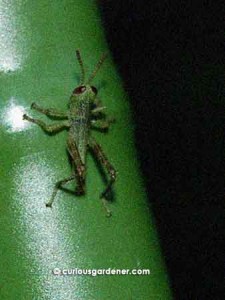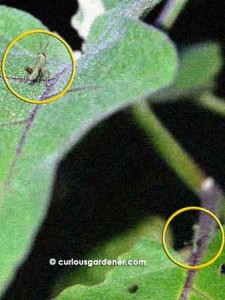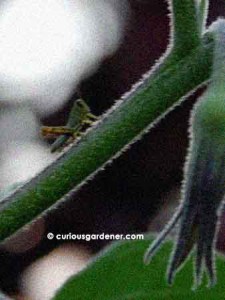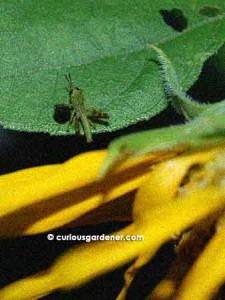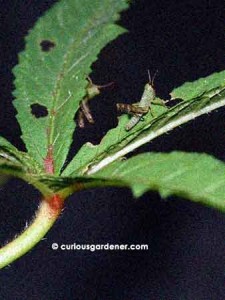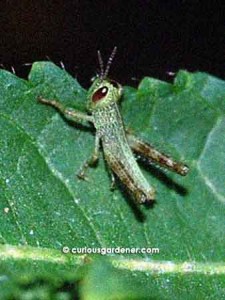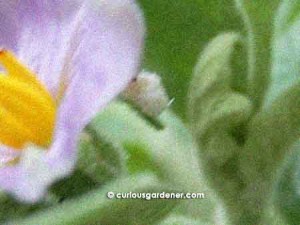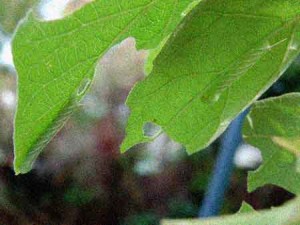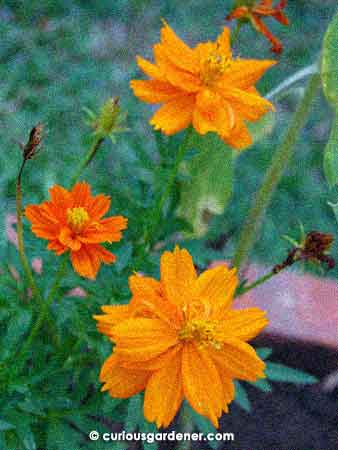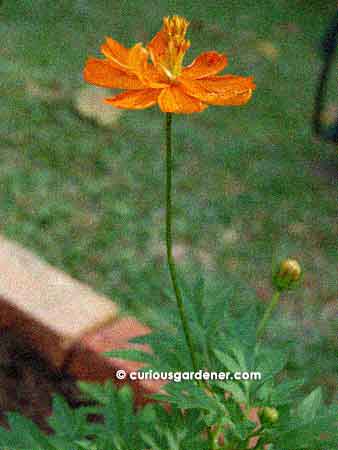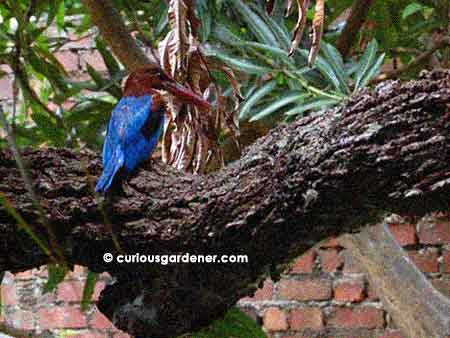I was in the garden in the evening with my camera when I caught a little movement out of the corner of my eye. A little head was peeping at me from behind a stem. I moved to look at it better and it moved quickly behind the stem. After a short game of hide and seek, I realized it was a little grasshopper.
How cute, I thought, finally getting a good picture of it as it ran up a pole. It finally got fed up with me and jumped or flew off. I thought that would be the last I saw of it.
A few minutes later, across the garden, I was checking on my brinjal plants when I saw … could it be the same little grasshopper?
Maybe – but it had company one leaf down. Oh, I thought, a sibling!
One plant down, though, there was another baby grasshopper…
And another on the sunflower plant…
And two more on an okra plant…
No, make that three…
No, four…
I rushed online to see whether I should panic or not. I was fairly certain that there were probably more little grasshoppers around than I’d seen, and I didn’t want them to become big pests. Honestly, I don’t want to have to kill them unnecessarily. We haven’t seen as many grasshoppers around as there used to be, say 30 years ago. But, I also don’t want them to destroy our plants.
Well, I was somewhat comforted to learn that grasshoppers have a number of predators, and I predict that some of the birds that visit the garden will be snacking on them – maybe even the Smyrna kingfisher. So I’m not going to panic just yet. Nature can keep on rolling and I’ll be a spectator. It’s just funny that when I said last week that we’d probably see the big grasshopper again, I thought it would be in context of it coming to feed in the garden – I didn’t think it would be in terms of it breeding here!
© 2011 curiousgardener.com All rights reserved.

